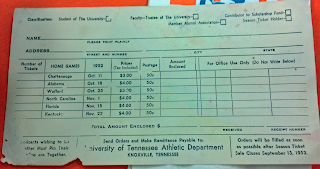College Hijinks
It was
two years ago tomorrow that the Kingsport Times News published my last column. I
was 71 years old.
I had
been 21 when the University of Tennessee Daily Beacon published my first newspaper column.
I had
no idea at the time that I would last 50 years as a newspaper columnist.
I thought
I would be a filmmaker. As a senior in college I made a film that won the Duke
Film Festival. I’d been accepted at the University of Southern California Film
School.
But then
Katie Worrell at the Kingsport Draft Board reclassified me 1-A, in that long
ago parlance that meant, “You’re in the Army now.”
I
figured if the Army was going to draft me and send me to Vietnam, they were
going to have to pay for those first 2,000 miles. I was not going to California
on my own dime to make the flight shorter.
So
to bide my time I went to grad school at Tennessee. And that’s how I became a
newspaper columnist.
If you follow the link below you can read a story about my most famous exploit as a UT Daily Beacon columnist.
https://www.knoxtntoday.com/
But
I did much more in the 86 columns I published in the student newspaper.
I
wrote a column that drew a response from the governor of North Dakota. (I
posited that there was no North Dakota, that no one had ever met anyone from
North Dakota, that no one I knew had ever even been to North Dakota, that North
Dakota was a government plot to hide the fact that there was a hole in the
map. He assured me there was a North Dakota and invited me to visit. But didn't include round trip tickets.)
Another
time when word leaked that controversial UT Chancellor Charlie Weaver was being
considered for a position at Georgia Tech, I printed a letter of
recommendation and asked my readers to fill it out and mail it to the president
of Tech. (Weaver still didn’t get the job.)
And
when Ed Boling was named the new president of the University, a controversial
choice, as if anything on campus in 1970 wasn’t controversial, I went to the UT
library and dug out Dr. Boling’s 1950 master’s thesis and wrote a column about
it. In 1950, when the University’s enrollment was 4,000, he predicted that by
1970, enrollment would jump to 9,000. In 1970, at the time I wrote the column,
enrollment was 26,000.
There were other columns and other college hijinks. But enough already. Read the story at the link.












